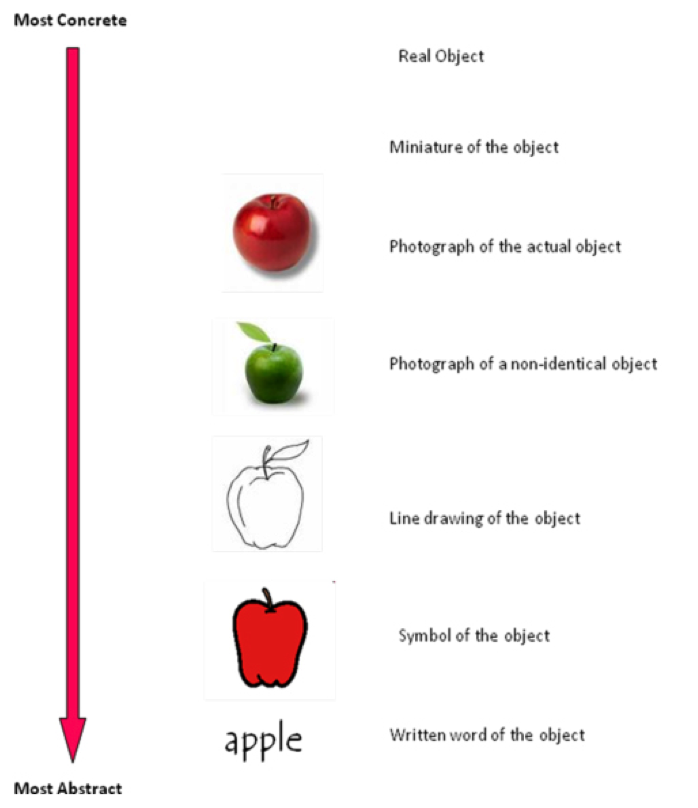Visual Information
Symbolic development can be explained as the developmental levels of understanding visual information.
 Our symbolic development starts at the most concrete level e.g. Object level. This is because we have a range of sensory inputs we can draw upon to determine what an object is included sight, hearing, touch, smell and taste.
Our symbolic development starts at the most concrete level e.g. Object level. This is because we have a range of sensory inputs we can draw upon to determine what an object is included sight, hearing, touch, smell and taste.
Throughout our childhood we begin to identify objects in a 2D picture form e.g. by looking at and reading books or when colouring pictures. Through education we learn to identify more abstract material including written text.
Some children and adults with learning disabilities or other genetic conditions have not developed through the stages of symbolic development and may only recognise more concrete visual input such as objects .
Adults who have suffered from a Stroke or Brain injury can find that their symbolic development is impaired and that they struggle to recognise abstract visual information such as written text or symbols.
Similarly adults with progressive neurological conditions which impact their cognition can also find that they cannot identify abstract information.
Speech and Language Therapists often use a range of Augmentative and Alternative Communication Aids to support children and adults with a range of Speech, Language and Communication needs and it is vital that we understand what level of symbolic development the user has. This will help us to create accessible information and to decide if the visual information should be;
- Object Level – in this case we are likely to use objects of reference systems or visual timetables using objects
- Photographic Level – information on a range of visual aids will be presented using photographs only
- Symbolic Level – Symbol systems such as Boardmaker, Widget or Makaton Symbols can be used
A symbolic development screen can be relatively simple to carry out. We have devised a quick screen, which allows us to check what visual information a person understands.
You should present the person with 3 items at a time, you can increase this to 4 to check consistency. You should start at the lowest level (objects) and work your way up/
You can access the downloadable resource here and the screen form to record your results.
If the user is inconsistent in their response or you are finding it difficult to decide what level of development they have then you should consult a Speech and Language Therapist.
Further Information
You can download more information about a range of visual strategies that can be used to support children and adults with a range of Speech, Language and Communication needs.
If you would like any further information or advice then you can speak to one of our therapists today, and they will offer you the support you need.








